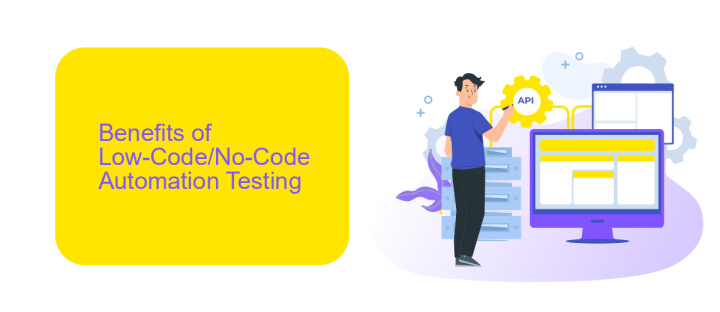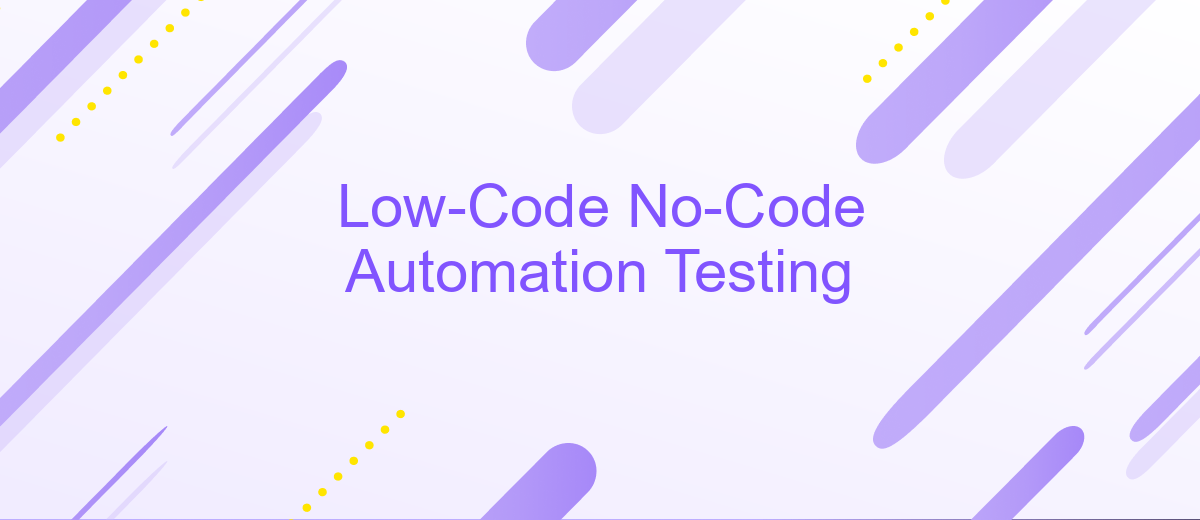Low-Code No-Code Automation Testing
In today's fast-paced digital landscape, Low-Code No-Code (LCNC) automation testing is revolutionizing the way software is developed and deployed. By enabling users with minimal coding knowledge to create robust automated tests, LCNC platforms are democratizing software quality assurance, reducing time to market, and significantly lowering costs. This article explores the benefits, challenges, and future prospects of LCNC automation testing.
Introduction
In today's fast-paced digital landscape, the demand for rapid software development and deployment has never been higher. Low-code and no-code platforms have emerged as game-changers, enabling organizations to build and automate applications with minimal manual coding. This paradigm shift has extended into the realm of automation testing, where these platforms are revolutionizing how tests are designed, executed, and maintained.
- Accelerated development cycles
- Reduced dependency on specialized developers
- Enhanced collaboration between technical and non-technical teams
- Cost-effective solutions for small and medium enterprises
One of the key advantages of low-code and no-code automation testing is the ease of integration with various services and tools. For instance, platforms like ApiX-Drive simplify the process of connecting disparate systems, allowing for seamless data flow and improved efficiency. As a result, organizations can achieve higher levels of automation and accuracy in their testing processes, ensuring robust and reliable software releases.
Benefits of Low-Code/No-Code Automation Testing

Low-code/no-code automation testing offers significant advantages by enabling both technical and non-technical team members to contribute to the testing process. This democratization of testing allows for quicker turnaround times and reduces bottlenecks, leading to faster delivery cycles. With intuitive drag-and-drop interfaces, users can create and execute tests without deep programming knowledge, making it easier to adapt to changing requirements and ensuring that quality is maintained throughout the development lifecycle.
Additionally, low-code/no-code platforms often come with pre-built integrations and easy-to-configure connectors. For instance, services like ApiX-Drive facilitate seamless integration between various applications, enabling automated workflows and data synchronization without the need for extensive coding. This not only streamlines the testing process but also enhances collaboration across different tools and systems, ultimately leading to more efficient and effective testing outcomes.
Types of Low-Code/No-Code Automation Testing Tools

Low-code and no-code automation testing tools have revolutionized the way software testing is conducted by enabling testers to create and execute tests without extensive coding knowledge. These tools can be broadly categorized based on their functionalities and features.
- Visual Workflow Automation Tools: These tools allow users to create test scenarios through a visual interface, often using drag-and-drop functionalities. Examples include UiPath and Zapier.
- Scriptless Test Automation Tools: These tools enable testers to design and execute tests without writing any code. Tools like Testim and Katalon Studio fall into this category.
- Integration and API Automation Tools: These tools focus on automating API tests and integrating various services. ApiX-Drive is a notable example, providing seamless integration capabilities for various platforms.
- Model-Based Testing Tools: These tools use models to represent the desired behavior of the system, generating test cases automatically. Examples include Tricentis Tosca and Hexawise.
Each type of low-code/no-code automation testing tool offers unique advantages, catering to different testing needs and preferences. By leveraging these tools, organizations can enhance their testing efficiency and reduce the time-to-market for their software products.
How to Select the Right Low-Code/No-Code Automation Testing Tool

Choosing the right low-code/no-code automation testing tool is essential for ensuring the efficiency and effectiveness of your software testing process. Start by identifying your specific testing needs and the complexity of the applications you aim to test. Consider whether the tool supports the types of tests you need, such as functional, performance, or regression testing.
Next, evaluate the ease of use and learning curve associated with the tool. A user-friendly interface and comprehensive documentation can significantly reduce the time required to onboard your team. Additionally, check for community support and available resources, as these can be invaluable when troubleshooting issues.
- Compatibility with existing systems and technologies
- Scalability to handle growing test cases and data
- Integration capabilities with other tools and services
- Cost and licensing structure
For seamless integration, consider tools like ApiX-Drive, which can automate the transfer of data between various applications, enhancing the overall efficiency of your testing process. By carefully assessing these factors, you can select a tool that best fits your organization's needs and ensures a smooth testing workflow.
- Automate the work of an online store or landing
- Empower through integration
- Don't spend money on programmers and integrators
- Save time by automating routine tasks
Best Practices for Low-Code/No-Code Automation Testing
When implementing low-code/no-code automation testing, it is crucial to prioritize the selection of user-friendly tools that integrate seamlessly with your existing workflow. Opt for platforms that offer a wide range of pre-built templates and customizable components to expedite the testing process. Additionally, ensure that the tool supports collaboration among team members, enabling both technical and non-technical users to contribute effectively.
Another best practice is to leverage integration services like ApiX-Drive to connect various applications and automate data transfers. This not only enhances the efficiency of your testing processes but also ensures consistency and accuracy across different platforms. Regularly update and maintain your automation scripts to adapt to any changes in your applications. Lastly, always validate the results of automated tests through manual checks to ensure the reliability and robustness of your testing framework.
FAQ
What is Low-Code No-Code Automation Testing?
What are the benefits of using Low-Code No-Code platforms for automation testing?
Can Low-Code No-Code platforms handle complex testing scenarios?
How can I integrate Low-Code No-Code automation testing tools with my existing systems?
Is Low-Code No-Code automation testing suitable for all types of applications?
Apix-Drive will help optimize business processes, save you from a lot of routine tasks and unnecessary costs for automation, attracting additional specialists. Try setting up a free test connection with ApiX-Drive and see for yourself. Now you have to think about where to invest the freed time and money!


